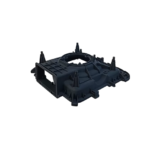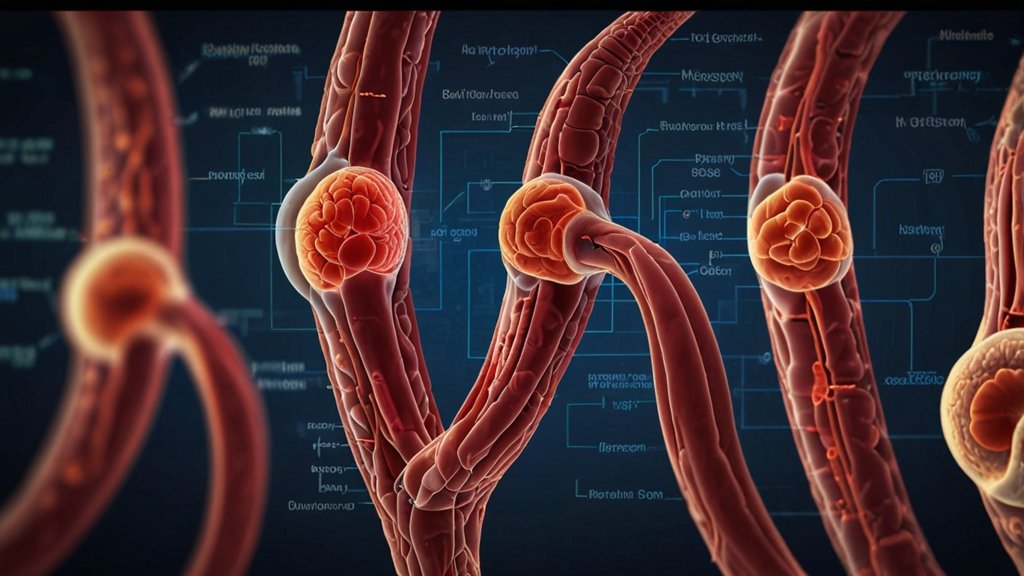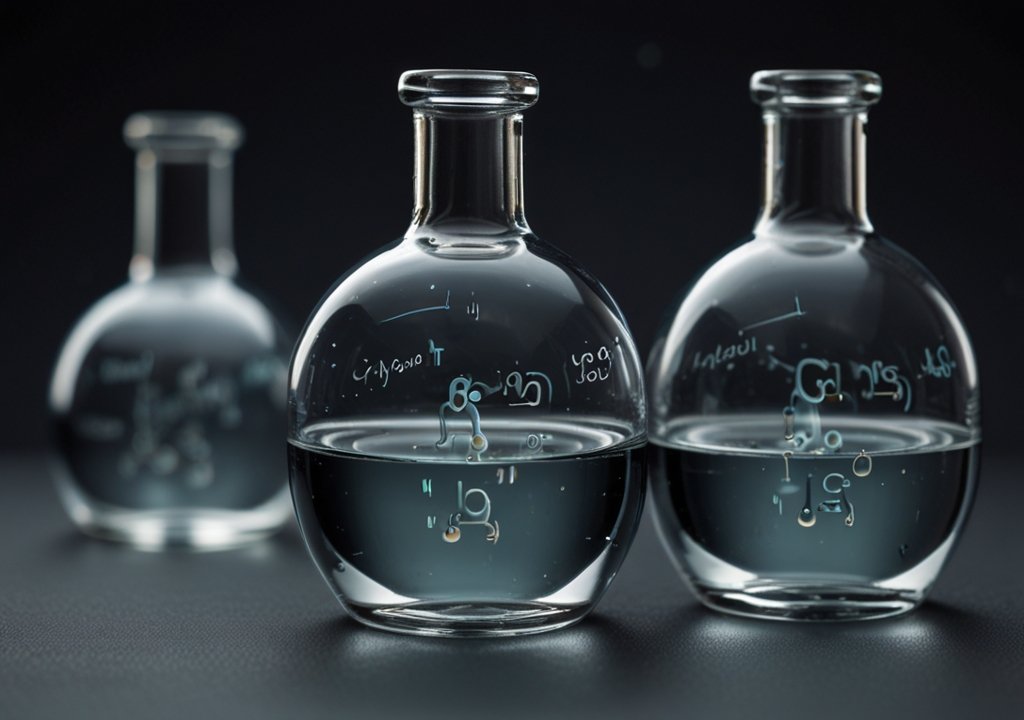Imagine sitting in your Biology exam, staring at a question about the journey of a sperm cell. It’s not just a cell; it’s an Olympian swimmer navigating a complex course, facing impossible odds, all for a single chance at creating life. That’s the magic—and the intricate science—you’re about to master with these Human Reproduction Class 12 notes. Forget dry textbooks; think of this as your backstage pass to understanding one of biology’s most profound symphonies, perfectly tuned to the CBSE Class 12 syllabus. Let’s explore this chapter wide open.
Why Mastering Human Reproduction Matters (Beyond the Exam!)
This chapter isn’t just about memorizing parts; it’s about understanding the very origin of human life. For your CBSE boards, it’s a high-weightage unit filled with diagrams, processes, and hormonal interplay that examiners love to test. Grasping it means acing not just reproduction, but concepts in genetics, endocrinology, and evolution too.
The Male Reproductive System: More Than Just Sperm Factories
Let’s break down the male setup. It’s a coordinated network designed for production, storage, and delivery.
- Key Players:
- Testes: The twin factories housed in the scrotum (temperature control is crucial!). Seminiferous tubules inside are where spermatogenesis happens.
- Epididymis: The sperm’s finishing school – maturation and storage.
- Vas Deferens: The muscular highway transporting sperm.
- Accessory Glands (Seminal Vesicles, Prostate, Bulbourethral): Cocktail mixers! They secrete fluids nourishing sperm and aiding motility, forming semen.
- Penis: The delivery system.
Male Reproductive System – Structure & Function Snapshot
| Structure | Location | Primary Function | Key Notes |
|---|---|---|---|
| Testes | Scrotum | Spermatogenesis, Testosterone production | Seminiferous tubules + Leydig cells |
| Epididymis | On posterior testis | Sperm maturation, storage, transport | Sperm gain motility here |
| Vas Deferens | Abdomen to urethra | Transport sperm from epididymis to urethra | Cut in vasectomy |
| Seminal Vesicles | Behind bladder | Secrete fructose-rich fluid (60-70% semen volume) | Provides energy for sperm |
| Prostate Gland | Below bladder | Secretes milky, alkaline fluid (25-30% semen volume) | Neutralizes vaginal acidity |
| Bulbourethral Gland | Below prostate | Secretes clear, lubricating fluid (Pre-ejaculate) | Cleanses urethra, lubrication |
| Penis | External | Copulatory organ, semen delivery, urination | Contains erectile tissue (Corpora cavernosa, spongiosa) |
The Female Reproductive System: Preparing for Potential Life
The female system is cyclical, preparing monthly for the possibility of pregnancy.
- Key Players:
- Ovaries: The almond-sized powerhouses producing eggs (ova) and hormones (estrogen, progesterone).
- Oviducts (Fallopian Tubes): The fertilization site. Fimbriae sweep the released egg inside.
- Uterus (Womb): The potential nursery. Its inner lining (endometrium) thickens cyclically.
- Cervix: The gateway between uterus and vagina.
- Vagina: The birth canal and copulatory passage.
Female Reproductive System – Structure & Function Snapshot
| Structure | Location | Primary Function | Key Notes |
|---|---|---|---|
| Ovaries | Pelvic cavity | Oogenesis, Hormone secretion (Estrogen, Progesterone) | Follicles house developing oocytes |
| Oviducts (Fallopian Tubes) | Extend from ovaries | Site of fertilization, Transport egg/zygote to uterus | Infundibulum (funnel) with fimbriae; Ampulla (common fertilization site) |
| Uterus | Pelvic cavity | Houses and nourishes developing embryo/foetus | Layers: Perimetrium, Myometrium (muscle), Endometrium (sheds during menstruation) |
| Cervix | Lower end of uterus | Connects uterus to vagina, secretes mucus | Mucus consistency changes cyclically |
| Vagina | External | Birth canal, receives penis during intercourse, menstrual flow exit | Elastic, muscular tube |
Also Read: HCOOCH CH2 H2O Explained: Methyl Formate Hydrolysis and Ethylene Glycol
Gametogenesis: Crafting the Blueprints of Life
This is the process of forming gametes (sperm and eggs) via meiosis. But sperm and egg production are vastly different tales.
- Spermatogenesis (Sperm Making):
- Location: Seminiferous tubules (Testes).
- Process: Continuous after puberty. Spermatogonia (stem cells) → Primary Spermatocytes (Meiosis I) → Secondary Spermatocytes (Meiosis II) → Spermatids → Spermatozoa (after spermiogenesis – loss of cytoplasm, flagellum formation).
- Duration: ~74 days from start to mature sperm.
- Output: Millions per day!
- Oogenesis (Egg Making):
- Location: Ovaries.
- Process: Starts before birth (foetal stage). Oogonia → Primary Oocytes (arrested in Prophase I of Meiosis I). At puberty, one primary oocyte per month completes Meiosis I → Secondary Oocyte (arrested in Metaphase II) + First Polar Body. Meiosis II completes only if fertilization occurs → Ovum + Second Polar Body.
- Output: One mature ovum per cycle (typically).
Spermatogenesis vs. Oogenesis – The Key Differences
| Feature | Spermatogenesis | Oogenesis |
|---|---|---|
| Location | Seminiferous Tubules (Testes) | Ovaries |
| Starts | At puberty | Foetal life (completes at puberty/fertilization) |
| Continuity | Continuous after puberty | Cyclical (one egg per month typically) |
| Meiosis Completion | Continuous (no long arrests) | Arrests occur (Prophase I, Metaphase II) |
| Cell Division Cytokinesis | Equal | Unequal (produces large ovum & tiny polar bodies) |
| Number of Gametes | 4 functional sperm per primary spermatocyte | 1 functional ovum per primary oocyte |
| Hormonal Trigger | FSH, Testosterone | FSH, LH |
The Menstrual Cycle: Nature’s Monthly Rehearsal
A roughly 28-day cycle orchestrated by hormones (GnRH, FSH, LH, Estrogen, Progesterone) preparing the uterus for pregnancy. If pregnancy doesn’t occur, the endometrium sheds (menstruation).
- Phases:
- Menstrual Phase (Day 1-5): Shedding of the uterine lining (endometrium). Low estrogen & progesterone.
- Follicular Phase (Day 1-13): FSH stimulates follicle development in ovary. Follicle secretes estrogen, which thickens the endometrium (proliferative phase). LH surge triggers ovulation.
- Ovulation (Day 14): Release of the secondary oocyte from the dominant follicle.
- Luteal Phase (Day 15-28): Ruptured follicle becomes corpus luteum, secreting progesterone. Progesterone prepares endometrium for implantation (secretory phase). If no pregnancy, corpus luteum degenerates → drop in progesterone → menstruation.
Menstrual Cycle Phases – Events & Hormones
| Phase | Approx. Days | Ovarian Events | Uterine Events | Dominant Hormones |
|---|---|---|---|---|
| Menstrual | 1-5 | Early follicle development begins | Endometrium sheds (Menstruation) | Low Estrogen, Low Progesterone |
| Follicular (Proliferative) | 1-13 | Follicle growth; Estrogen ↑↑ | Endometrium rebuilds & thickens | FSH, Estrogen ↑ |
| Ovulation | 14 | LH Surge → Release of egg (Ovum) | – | Peak LH, High Estrogen |
| Luteal (Secretory) | 15-28 | Corpus Luteum forms; Progesterone ↑↑ | Endometrium glands secrete; Prepares for implantation | Progesterone ↑↑, Estrogen ↑ |
| (If No Pregnancy) | 28+ (1-5) | Corpus Luteum degenerates | Drop in Prog/Estro → Menstruation begins | Prog ↓↓, Estro ↓↓ |
Fertilization: The Ultimate Rendezvous
This isn’t chance; it’s a biochemical marathon!
- Sperm Transport & Capacitation: Millions deposited, few reach the oviduct. Sperm undergo capacitation (changes in the female tract) to gain fertilization ability.
- Acrosomal Reaction: Sperm contacts zona pellucida (egg coat). Acrosome releases enzymes to digest it.
- Sperm Entry: One sperm penetrates the egg membrane, triggering cortical reaction (hardening zona pellucida to block polyspermy).
- Fusion & Zygote Formation: Sperm and egg nuclei fuse → Diploid Zygote (the first cell of the new individual).
Embryonic Development: From One Cell to a Blueprint
The zygote’s incredible journey:
- Cleavage: Rapid mitotic divisions (no growth). Zygote → 2-cell → 4-cell → 8-cell → Morula (solid ball).
- Blastocyst Formation: Morula develops a fluid-filled cavity → Blastocyst (Trophoblast outer layer + Inner Cell Mass).
- Implantation (Day 6-7): Blastocyst attaches and embeds into the endometrium. Trophoblast forms chorion (part of placenta).
- Gastrulation (Week 3): Inner cell mass forms 3 primary germ layers:
- Ectoderm: Skin epidermis, nervous system.
- Mesoderm: Muscles, bones, connective tissues, circulatory system, excretory system, gonads.
- Endoderm: Lining of gut, respiratory tract, liver, pancreas.
- Organogenesis (Weeks 4-8): Formation of specific organs from germ layers. Embryo becomes a foetus by end of week 8.
Pregnancy & Beyond: Parturition and Lactation
- Pregnancy (~40 weeks): Maintained by hormones (hCG early on, then progesterone/estrogen from placenta). Placenta facilitates exchange.
- Parturition (Birth): Triggered by complex hormonal signals (mainly fetal cortisol → maternal estrogen rise → oxytocin release). Involves:
- Dilation: Cervix dilates, amniotic sac may rupture (“water breaking”).
- Expulsion: Baby delivered by strong uterine contractions.
- Afterbirth: Placenta and membranes expelled.
- Lactation: Milk production (prolactin) stimulated by suckling, which also triggers oxytocin for milk ejection (“let-down reflex”). Colostrum (first milk) is rich in antibodies.
Reproductive Health: Knowledge is Power
Understanding reproduction is incomplete without addressing health and responsibility.
- Common Issues: Infertility, STIs/STDs (Sexually Transmitted Infections/Diseases – HIV/AIDS, Syphilis, Gonorrhea, Chlamydia), menstrual disorders, cancers.
- Contraception: Essential for preventing unwanted pregnancies and STIs. Methods work by:
- Preventing Gamete Formation/Release (e.g., Oral pills, implants, vasectomy, tubectomy).
- Preventing Gamete Meeting (e.g., Barriers – condoms, diaphragms; IUDs).
- Preventing Implantation (e.g., IUDs).
- Terminating Pregnancy (e.g., Medical abortion – MTP).
Common Contraceptive Methods – How They Work
| Method Type | Examples | Primary Mechanism | Key Advantages | Key Disadvantages/Limitations |
|---|---|---|---|---|
| Barrier | Condoms (M/F), Diaphragm | Prevent sperm meeting egg | STI protection (condoms), No hormones | Can break/slip, Requires use each time |
| Intrauterine Devices (IUDs) | Copper-T, Hormonal IUDs | Prevent fertilization/implantation; Thicken cervical mucus | Long-acting, Reversible, Highly effective | Requires insertion/removal by doctor, Possible side effects |
| Hormonal | Oral Pills, Injectables, Implants | Prevent ovulation, thicken cervical mucus | Highly effective, Reversible | Side effects (weight, mood), No STI protection, Requires prescription |
| Surgical Sterilization | Tubectomy (F), Vasectomy (M) | Block fallopian tubes/vas deferens | Permanent, Highly effective | Surgical procedure, Usually irreversible |
| Emergency Contraception | Pills (Levonorgestrel) | Delays ovulation or prevents fertilization | Backup after unprotected sex | Not for regular use, Less effective than regular methods |
Study Hacks: Conquering Human Reproduction for CBSE Boards
- Master the Diagrams: Practice drawing and labeling male/female systems, sperm/egg structure, menstrual cycle graph, embryonic stages. Diagrams fetch high marks!
- Process Flowcharts: Create flowcharts for spermatogenesis, oogenesis, menstrual cycle phases, fertilization steps, embryonic development stages. Use arrows and keywords.
- Hormone Hotlist: Make a table listing each hormone (GnRH, FSH, LH, Testosterone, Estrogen, Progesterone, hCG, Oxytocin, Prolactin), its source, target, and primary action. Hormonal control is crucial.
- Focus on Differences: Clearly understand spermatogenesis vs oogenesis, mitosis vs meiosis in gametogenesis, the phases of the menstrual cycle.
- Link Concepts: See how hormones control the cycle, how structure relates to function (e.g., acrosome in sperm), how embryonic layers form specific organs.
- Previous Years & Sample Papers: Practice questions religiously. Identify recurring themes and important definitions.
- Mnemonics: Use them! E.g., for menstrual phases: Men Fight Over Love (Menstrual, Follicular, Ovulation, Luteal).
You May Also Read: Velugu Epaper: Your Free Digital Gateway to Telugu News & Exam Success
Conclusion
Human reproduction isn’t just another chapter; it’s the story of us. These Human Reproduction Class 12 notes have distilled the CBSE syllabus into your essential toolkit. You’ve navigated the intricate systems, decoded the hormonal symphonies, and traced life’s incredible journey from a single cell. Remember, success lies in understanding the ‘why’ behind the ‘what’. Grab your diagrams, revisit those tables, tackle those past papers, and walk into your exam ready to explain the miracle of life with confidence. Go ace it!
FAQs
Q: What is the most important diagram in the Human Reproduction chapter?
A: While all are important, ensure you can draw and label the male reproductive system, female reproductive system, a mature sperm, and the various stages of embryonic development (especially the blastocyst and the germ layers) perfectly. The sectional view of the seminiferous tubule and the menstrual cycle hormone graph are also high-priority.
Q: What’s the difference between gametogenesis and embryogenesis?
A: Gametogenesis (spermatogenesis/oogenesis) is the process of forming the haploid gametes (sperm and egg) through meiosis. Embryogenesis is the process of development of the embryo from the diploid zygote (formed after fertilization) through cleavage, blastulation, gastrulation, and organogenesis (mitosis).
Q: Why is the corpus luteum so important?
A: The corpus luteum is vital because it secretes progesterone (and some estrogen) after ovulation. Progesterone is essential for:
Maintaining the thickened endometrium for potential implantation.
Suppressing further ovulation during that cycle.
Preparing the mammary glands for lactation. If pregnancy occurs, the corpus luteum is rescued by hCG.
Q: What exactly triggers parturition (childbirth)?
A: Parturition is triggered by a complex interplay, primarily:
The fully developed foetus releases cortisol.
Foetal cortisol stimulates the placenta to produce more estrogen and less progesterone.
The rise in estrogen makes the uterus more sensitive to oxytocin.
Oxytocin from the maternal pituitary is released in pulses, stimulating powerful uterine contractions. The hormone relaxin also helps by relaxing the pelvic ligaments.
Q: How do barrier methods of contraception also help prevent STIs?
A: Barrier methods like condoms (male and female) physically block the exchange of semen and vaginal fluids between partners during intercourse. Since many STIs (like HIV, Chlamydia, Gonorrhea) are transmitted through these bodily fluids, condoms act as a physical barrier, significantly reducing the risk of infection transmission.
Q: What is the significance of the acrosomal reaction?
A: The acrosomal reaction is crucial for fertilization. When a capacitated sperm contacts the zona pellucida surrounding the egg, the acrosome (a cap-like structure on the sperm head) releases digestive enzymes (hyaluronidase, acrosin). These enzymes dissolve a local portion of the zona pellucida, allowing the sperm to penetrate it and reach the egg’s plasma membrane for fusion.
Q: What happens if more than one sperm fertilizes an egg (polyspermy)?
A: Polyspermy (entry of multiple sperm) usually leads to an abnormal number of chromosomes (polyploidy) and is fatal for the developing zygote. To prevent this, the egg has a defense mechanism: the cortical reaction. Immediately after the first sperm penetrates, cortical granules in the egg release enzymes that harden the zona pellucida, forming a permanent barrier that blocks any other sperm.











